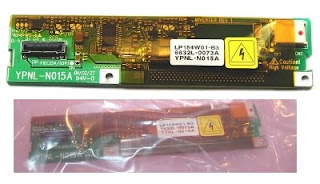Edited results you can expect: http://youtu.be/u4ztyGLMCjg
Everything worked as expected except for the fogging.
It fogs. It fogs because moisture on the inside of the camera waterproof enclosure (and from within the camera) condenses on the inside surface of the waterproof enclosure. What was particularly annoying was that the surface on which moisture first condensed was the colder surface, which happens to be the thinner lens cover.
Fogging was partially abated by putting car A/C on max and recirculate and having the vent directed into a bag containing the Go Pro. After the A/C sufficiently dehumidified and cooled things, the Go Pro was assembled and then brought outside.
Why does it fog? The outside is colder than the inside. But what makes the fogging problem complex is that the inside will not equalize with the outside because running the camera generates heat. In very cold climates, this heat is welcome since it keeps the camera circuitry warm. In not so cold climates, then it is not so welcome. So, dealing with this problem is about striking a balance running the camera.
Fog thoughts/observations:
The conditions were Hawaiian coastal water temps in November about 79F/26C. The air was a little bit warmer. The interior of the camera must have been quite warm.
Once condensation occurs, more condensation continues to occur in the exact same place. Is this due to the surface accumulating dirt? A place where condensation would preferentially gather other than the inside surface of the lens would be super useful. Maybe the enclosure can be modified for such a behavior.
'Set and forget' simply didn't work at all. The camera would run, heat and then fog. I believe the faster/higher resolution modes make the camera hotter. I also believe that a newer, more highly charged battery generates more heat as it initially discharges.
'Record on launch' where the camera is left on but only put into recording mode for a wave worked fairly well, but the recording and stopping had to be done at the beginning and ending of a ride otherwise condensation would accumulate.
The moment condensation is observed, powering the camera down and letting it cool was the best strategy.
The best no fog strategy was to paddle out with the camera off, turn it on for a set and record before launch. After paddling out of the inside as all courteous surfers should immediately do, repeating turning off the camera for the paddle out was the trick.
This camera cycling strategy was best served by keeping the nose of the board along with the camera underwater while waiting in the lineup for the next ride.
Would anti-fog in the inside of the lens work?
Remaining thoughts/observations:
The camera needs a quick trash that throws out the last recording or picture. Maybe it does this. But what would be great is a button sequence to power down and save or to power down and delete.
Didn't explore the sequential picture modes but think that they will be just as challenging with fog due to the 'set and forget' heat issues.
There was little regret in spending the money on the largest SD card possible. Lots of data gets generated.
The USB charging is perilous if a laptop computer sleeps and powers down the USB port causing the camera to not charge.
Be prepared to learn more than you probably want on dealing with video files and the technical issues associated with them.
Older locals don't like these things. One bit. And the aggro local treatment kooks receive is pretty quick and much more severe. It was amazing to see the reactions. Locals were divided into two categories: One of fury and hate and the other of intellectual curiosity. The non-locals and kooks were less stimulated and more or less wanted to know if it worked well. It felt like wearing a huge billboard that advertises bad things for the user. So don't go out without knowing how to operate the camera with your eyes closed. Practice and learn to stop/start the camera in a second or two while mounted on your board. Don't dismount the board to operate it. Being a kook with it is one thing, being dangerous fumbling with it on the inside or on launch is quite another.

























 Additional points:
Additional points: 





 Step Six
Step Six

















